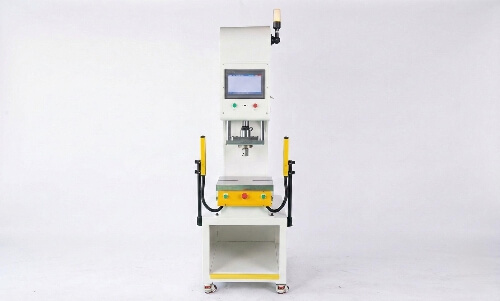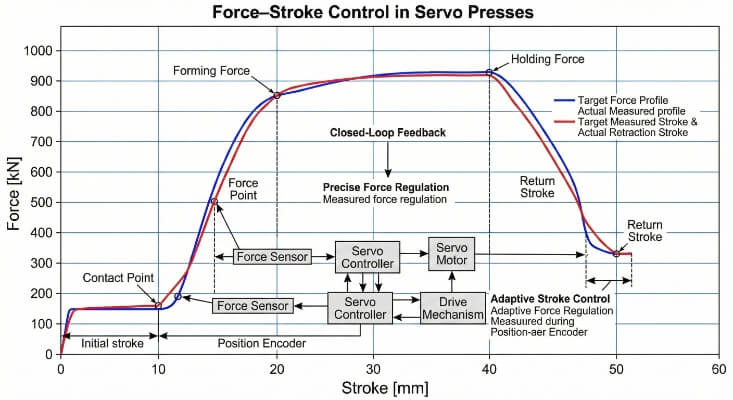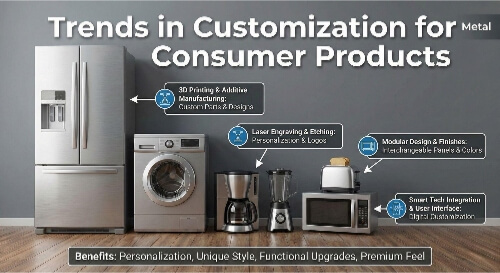Many manufacturers struggle to balance production speed with quality and cost. Cold stamping offers a way to produce accurate parts quickly and in large volumes. But what exactly is it, and how can it help you solve these common issues?
Cold stamping is also known as cold forming. It’s a metalworking technique where metal sheets are formed into desired shapes at room temperature. High pressure is used to press the metal into a set of dies, creating intricate parts without heating. It is popular in industries such as automotive and electronics because of its cost-effectiveness and speed.
This technique preserves the metal’s strength and durability. Keep reading to learn more about how cold stamping is unique in manufacturing.
What is Cold Stamping?
Cold stamping shapes metal sheets into parts using pressure, not heat. It takes place at room temperature. This method keeps the material’s structure stable, which helps keep part dimensions accurate. Cold stamping is common for brackets, covers, housings, and panels.
It works by placing a metal sheet between a die and a punch. The press then applies force to form the desired shape. No heating is needed before forming. This keeps energy use low and shortens production time.
Cold Stamping vs. Hot Stamping
Cold stamping forms metal without adding heat. Hot stamping heats the metal first, then forms it. This difference affects material strength, surface finish, and cost.
Cold stamping keeps the material’s strength as-is. Hot stamping softens the material first. That makes it easier to form but also changes its structure. Cold stamping usually offers better surface finish and tighter tolerances. It is also faster since no heating step is involved. Hot stamping, however, is better for ultra-high-strength parts.
Cold Stamping Machine: Key Components
Press to learn more about
Cold stamping machines are powered by the press, which provides the force needed to form the metal sheets. The size and type of presses vary, from small mechanical presses for simple tasks to large hydraulic presses for complex high-strength stampedings.
Dies
Die are specially designed tools that give metals their new shape when they are stamped. A die set consists of two components: a male punch and a female die.
Feeding Mechanisms
The feeding mechanisms move metal sheets precisely into and out of the press, ensuring that each piece of metal is aligned properly before stamping.
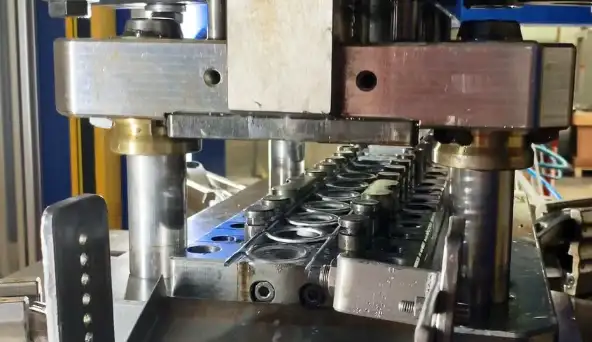
Cold Stamping: The Pros and Cons
Cold stamping has clear benefits, but it’s not perfect for every job. Knowing the trade-offs can help you decide when to use it and when to consider other options.
Pros of Cold Stamping
- Cost Effectiveness: Cold Stamping is more cost-effective than other forming methods. The material does not need to be heated, saving energy costs.
- High Productivity: Cold stamping can produce high output at room temperature without heat.
- Material strength and integrity: Since the metal is not heated to a high temperature, it retains its original hardness and strength.
- Precision & Quality: Cold Stamping provides excellent surface finish and dimensional accuracy. Diets can be used to create intricate shapes and fine details that are consistent throughout multiple productions.
- Reduced waste: The precision of the process minimizes material waste because the dies are carefully designed to match the final shape.
Cons of Cold Stamping
- Limited for Thinner Metal Sheets: Cold Stamping is limited to thin metal sheets. At room temperature, it can be challenging to form thicker materials without compromising quality or needing excessive force.
- Higher Tooling Costs: Cold Stamping Dies must be made from highly durable materials to withstand pressures without deformation. This can result in higher upfront tooling costs.
- Only Simple Shapes: This technique is not suitable for complex designs. Hot stamping can handle heated materials more flexibly.
- The Risk of Work Hardening: While work hardening makes the metal more robust, it is also more fragile and susceptible to breaking.
Cold Stamping Process: Step by Step
The cold stamping process follows a clear set of steps. Each one helps shape the final part accurately and efficiently.
Selecting and treating the material
First, the metal sheet is selected based on product specifications. After selecting the metal sheet, it is cleaned and coated if necessary.
The Stamping Process: Step by Step Instructions
- Loading Material: Prepared metal sheets are loaded into the stamping presses. The sheet is accurately positioned under the die by feeding mechanisms.
- Stamping: A press drives the die with great force into the metal, forming it into the desired shape. Depending on the complexity, this can be done in one or more stages.
- Ejection: The metal is removed from the die after it has been stamped. In high-volume production, this step may be automated to streamline the process.
Finishing processes: Painting, Assembly, and Trimming
- Trimming: The excess material around the edge of the stamped part will be trimmed. Laser cutting or other precise cutting techniques are used to achieve clean edges and accurate measurements.
- Paint: The parts are painted if required. The appearance is improved, and the corrosion resistance can be increased. Surface preparation, priming, and the topcoat are all part of the painting process.
- Assembly: This step is the final assembly of stamped parts to more significant components or products. It may involve welding, fastening, or using adhesives to secure the parts.
Materials suitable for cold stamping
Not all metals handle cold stamping well. The best materials are ductile, stable at room temperature, and easy to form without cracking.
Metals Commonly Used
Cold stamping is used primarily with metals that are durable and malleable. Metals that are commonly used include:
- Steel: Steel is used in the cold stamping of automotive and appliance components because it’s solid and durable.
- Aluminum: Aluminum is lightweight and resistant to corrosion. It’s used in consumer electronics and aerospace for parts that need a high strength-to-weight ratio.
- Copper: Due to its excellent electrical conductivity, it is used for heat exchangers and electrical components.
- Brass: Due to its low friction and resistance to tarnishing properties, brass is ideal for decorative fixtures and other hardware.
Material selection limitations
Cold stamping materials selection is a challenging task.
- Thickness & Ductility: Material must be sufficiently pliable to form without cracking but not too soft to deform unintentionally. This eliminates certain hard and brittle materials.
- Complexity in Shape: As the component’s design becomes more complex, so does the material selection that can be made without compromising structural integrity.
- Cost: Materials such as high-grade copper or aluminum can be costly, making them less viable in projects with tight budgets.
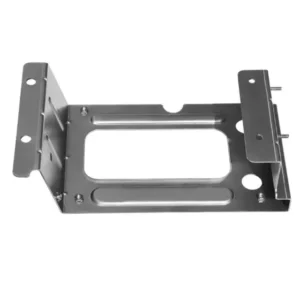
Equipment and Technology
Cold stamping uses a mix of mechanical tools and automated systems. Each machine and tool plays a role in shaping parts quickly and accurately.
Cold Stamping Machines Overview
Cold stamping relies primarily on specialized machines that can handle high pressures while maintaining precision. The following equipment is essential:
- Mechanical presses: Ideal for producing at high speed, mechanical presses store energy in a motorized flywheel and then transfer it to the press ram by a controlled movement.
- Presses Hydraulics: Hydraulic presses are ideal for complex or more extensive stampings requiring precise control, as they provide consistent pressure.
- Servo Presses: Servo presses are a modern innovation that uses servo motors to control the ram position precisely. They offer flexibility and efficiency. They can adjust speed and position during the stroke, which is beneficial for forming complicated parts.
Maintenance Tips for Cold Stamping Equipment
Cold stamping equipment must be maintained properly to extend its life and maintain quality. Here are some maintenance tips that work:
- Regular Lubrication: Ensure that all moving parts are regularly greased to reduce wear and tear. Use the recommended lubricant type for each component of the machine.
- Routine Inspections: Conduct regular inspections of components, such as dies and presses, to check for wear or damage. Early detection can save you money by preventing costly downtime.
- Cleaning: Clean machines of dust, metal scraps, and other debris that could damage delicate components or affect their operation.
- Record-Keeping: Keep a detailed record of all maintenance tasks to monitor the equipment’s health and determine when it might be time to replace parts.
Cold Stamping Design Considerations
Design plays a big role in cold stamping success. Good design reduces waste, speeds up production, and keeps costs down.
Cold Stamping Design for Manufacturability
When designing parts for cold-stamping, the primary objective is to ensure the design can be produced efficiently and economically. The following are key considerations:
- Material selection: It is essential to choose a suitable material that balances functionality, cost, and manufacturing.
- Simplicity: By simplifying the design to the maximum without compromising functionality, manufacturing costs and complexity can be reduced significantly.
- Tolerances: By setting realistic tolerances in line with the capabilities and limitations of cold stamping machines, high-quality production can be achieved without extensive post-processing.
- Tooling design: It is essential to design efficient tooling to produce parts quickly and with minimal waste.
Common Design Challenges & Solutions
If not appropriately addressed, cold stamping can present several design challenges, leading to production problems.
- Springback: The material will revert slightly after it has been formed. This can affect dimensional accuracy. This issue can be mitigated using simulation software to predict the spring back and adjust tooling accordingly.
- Wrinkling: The material can wrinkle when stamping thin materials or complex shapes. To prevent wrinkling, reinforce critical areas and use draw beads to control the material flow when stamping.
- Material splitting: High-stress concentrations may cause the material to split. This problem can be resolved by redesigning the part so that stress is distributed more evenly or by selecting a better material.
Impact of design on cost and production efficiency
The design of a stamped component directly impacts cost and production efficiency on several levels:
- Tooling costs: Complex designs require expensive and complex tooling. This can lead to a significant increase in initial costs.
- Material Using: Material Using an efficient design reduces waste material, which in turn lowers costs and is also more environmentally friendly.
- Cycle time: Designs optimized for quick and straightforward stamping can reduce the cycle time, increasing production throughput.
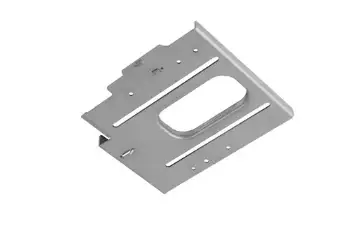
Cold Stamping Quality Control
Cold stamping requires a high level of quality control to ensure each part is manufactured according to the highest standards for precision and durability. Practices include:
- Testing before production: Before the full-scale production starts, extensive testing is conducted to ensure that dies and machines are performing as expected.
- In-Process Inspection: Regular inspections throughout the manufacturing process can help detect defects early.
- Quality Control Checks after Production: Parts are rechecked for quality after stamping.
Cold Stamping Applications
Cold stamping is used in many industries. It offers speed, accuracy, and low-cost production for simple to mid-level complex parts.
Automotive Industry
Cold stamping is widely used in the automobile industry because of its efficiency and ability to produce substantial, lightweight parts. Applications include:
- Frames and Body Panels
- Engine Components
- Safety Components
Electronics Manufacturing
Cold stamping is a good option for small and complex parts in electronics manufacturing because of its precision and efficiency.
- Connector Components
- Enclosures & Shields
- Heat Sinks
Aerospace and Defense
Cold stamping is used in aerospace and defense industries where precision, strength, and weight are essential.
- Aerospace Components
- Satellite Components
- Defense Equipment
Conclusion
Cold stamping is a manufacturing process used in many industries because it is efficient, precise, and cost-effective. This technique maintains the metal’s mechanical properties and integrity while allowing for high-volume production. Cold stamping is used in many industries, including automotive, electronics, aerospace, and defense, which require high precision, strength, and lightweight.
Do you need a reliable sheet metal parts manufacturer? Shengen is the place to go. We specialize in sheet metal laser cutting, bending, surface finish, and CNC Machining. Reach out to Shengen Today and seek help from professionals!
FAQs
What is the difference between cold stamping vs. hot stamping?
Cold stamping is a method of shaping metal at room temperature while preserving its strength. Hot stamping first heats the metal, which makes it more pliable while altering its properties. Cold stamping produces more accurate results and is faster. Hot stamping uses less force but consumes more energy.
Cold stamping is a manufacturing technique that contributes to sustainability.
Cold stamping, which is done at room temperature, is an energy-efficient process. It is resource-saving and produces little waste. Cold-stamped parts are durable, reducing the need to replace them and reducing material waste.
What are the costs associated with setting up a cold-stamping operation?
The initial costs of setting up a cold-stamping operation are high. This includes buying presses and dummies, as well as updating your facilities. Also, training costs are necessary for the staff. The long-term advantages, such as high production rates, can justify these costs.
Can cold stamping used to produce custom parts?
Cold stamping is perfect for custom parts. Cold stamping is flexible because it uses custom-designed or adjustable dies. This adaptability is ideal for industries that require specific parts specifications.
What is the average lead time for a project involving cold stamping?
Cold stamping can take a long time. Simple projects can be finished in just a few short weeks. It could take several months to complete a complex project that requires custom tooling. To manage these timelines, you need to plan with your provider.
More Resources:
Design Considerations for Stamping – Source: Aranda Tooling
Quality Control in Stamping – Source:
Metal Stamping Materials Selection – Source: Worth
Hey, I'm Kevin Lee

For the past 10 years, I’ve been immersed in various forms of sheet metal fabrication, sharing cool insights here from my experiences across diverse workshops.
Get in touch

Kevin Lee
I have over ten years of professional experience in sheet metal fabrication, specializing in laser cutting, bending, welding, and surface treatment techniques. As the Technical Director at Shengen, I am committed to solving complex manufacturing challenges and driving innovation and quality in each project.

